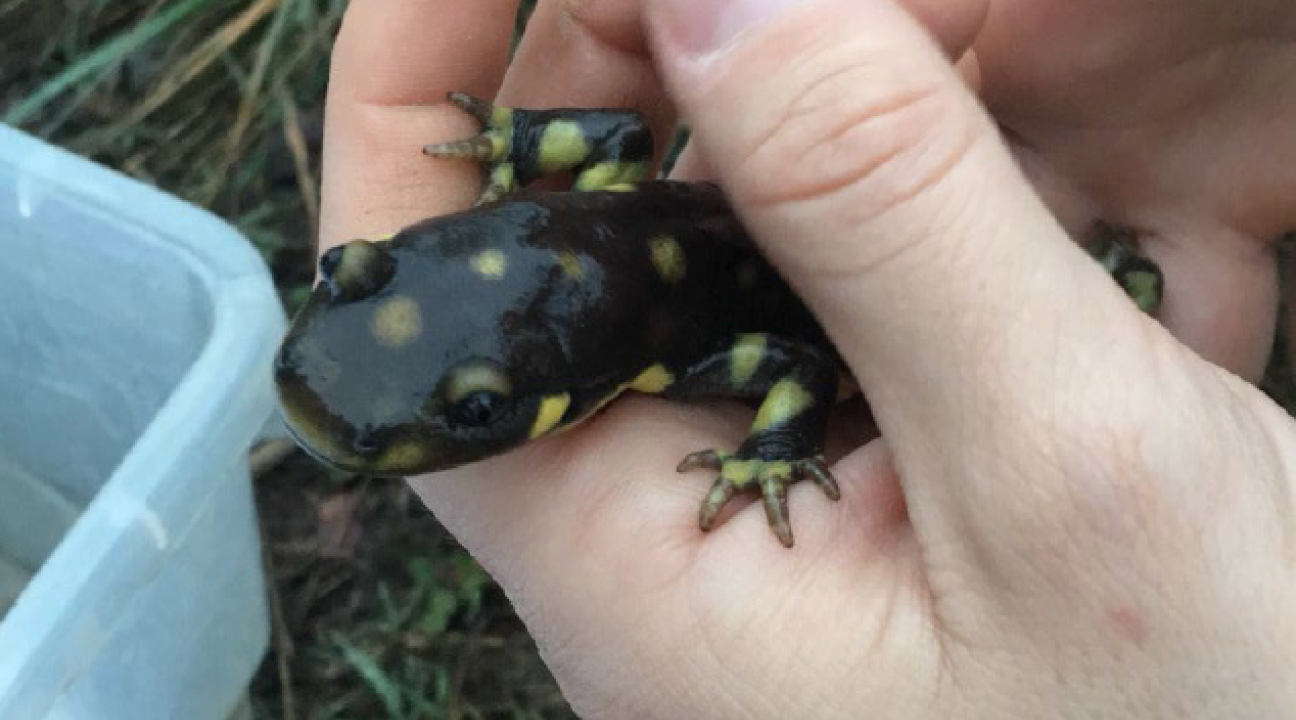Tiger salamander movement and distribution
Tiger salamander movement and distribution
The California tiger salamander (Ambystoma californiense) is an endangered and endemic species that reproduces annually in vernal pools.
Edwards 2016: Factors affecting productivity of the endangered california tiger salamander on the Santa Rosa Plain
Edwards et al 2017a: Factors affecting metamorphosis on the endangered California tiger slamander on the Santa Rosa Plain
Edwards et al 2017b: The effects of elevation and drainabe on tiger salamander breeding pools
Miller et al 2017: Water quality as a determinant in California tiger salamander (Ambystoma californiense) breeding, growth, and development.
Pennella et al 2018: The effects of elevation on vernal pool hydrology with regards to California tiger salamander populations.
Carlos 2017: A habitat suitability model predicts areas in Sonoma County that contain suitable habitat for the California tiger salamander and highlights areas that may be needed to be maintain viable populations.
Bradbury et al 2017: The number of California tiger salamanders crossing Stony Point Road showed a slight increase in the 2015-16 rainy season over the previous year but not as high as levels observed in 2012-13.
Nabor et al 2018; Torres et al 2018: We used eDNA to detect non-native invasive species from water samples.
Brunal et al 2019: To gain an understanding of their movement patterns during breeding, pitfall traps were set up surrounding a local vernal pool. These traps allowed reproductive adults to be trapped on their way in/out of the pond, and were then marked. Demographic and morphologic data were collected, including images of each individual prior to release. Individual tiger salamanders have a unique spot pattern, so we digitally analyzed spot patterns in photos of trapped males using a matching algorithm to identify recaptures allowing evaluation of their movement patterns. Using these data we evaluated whether males exit at the same region of the pond as they entered, indicating a preference for specific upland habitat, or if their movement patterns are random.
Juarez et al 2019: Traditionally, dipnet sampling is the technique used for surveying larval populations, however, environmental DNA (eDNA) sampling is an emerging and less invasive method of detecting the presence or absence of a species from a water or soil sample. Using a target species approach, eDNA captured from water samples was analyzed with qPCR. Larval dipnet counts and eDNA samples were collected from various preserves located on the Santa Rosa Plain. Our study compares the effectiveness of eDNA methodology to that of traditional dipnet surveys.
The Waters Collaborative provided seed funding to initiate California tiger salamander (CTS) work at this site by SSU in 2015 for efforts related to Jon Edwards' Thesis project. Those initial efforts have led to the development of a broader range of research projects on CTS at this site, with involvement of many SSU graduate and undergraduate students. The work is also supported by external sources, including the US Fish and Wildlife Service, which is now quite interested in the ongoing work on this population.
| Title | Format | Download | Students |
|---|---|---|---|
| "Factors affecting productivity of the endangered california tiger salamander on the Santa Rosa Plain" | poster | Jonathan Edwards | |
| "Factors affecting metamorphosis on the endangered California tiger slamander on the Santa Rosa Plain" | poster | Jonathan Edwards, Adam Inouye | |
| "The effects of elevation and drainabe on tiger salamander breeding pools" | poster | Jonathan Edwards, August Stadtfeld | |
| "Water quality as a determinant in California tiger salamander (Ambystoma californiense) breeding, growth, and development" | poster | Emily Miller, Jonathan Edwards | |
| "The effects of elevation on vernal pool hydrology with regards to California tiger salamander populations: | poster | Vanessa Pennella, August Stadtfeld, Jonathan Edwards | |
| "Modeling habitat suitability for the California Tiger Salamander in Sonoma County" | report | Phillip Carlos | |
| "Road crossings of California tiger salamanders (Ambystoma californiense) near mitigation tunnels in Sonoma County, CA" | poster | Julianne Bradbury, Dustin Howland | |
| "The Viability of using eDNA to Detect the Presence of Species in a Warm Water Ecosystem" | poster | Veronica Nabor, Laura Perez, Jessica Pena, Brian R. Lavin, Dustin Howland | |
| "Development of eDNA tools for California Tiger Salamanders (Ambystoma californiense) in Vernal Pools on the Santa Rosa Plain" | poster | Jessica Torres, Jazmin Morales, Brian Lavin | |
| "An Evaluation of Movement Patterns of California Tiger Salamanders (Ambystoma califoriense) Using Individual Identification based on Spot Patterns" | poster | Victoria Brunal, Alex Moore, Ryan Lewis, Alessandra Phelan-Roberts | |
| "eDNA sampling of the California Tiger Salamander (Ambystoma californiense) in Vernal Pools of the Santa Rosa Plain" | poster | Jennifer Juarez-Yoc, Kayla Hontz, Alejandra Perez, Jessica Torres |
Project Date:
2015 to 2019
Faculty:
- Derek Girman
- Jeff Baldwin
Departments:
- Biology
- Environmental Studies and Planning
Partners:
- Sonoma County Water Agency
- U.S. Department of Fish and Wildlife
Students:
- Senior thesis
- Masters research
- BIOL 599
Locations:
- Sonoma County
Project Topics:
- Biodiversity
- Water
Funding Sources:
- Koret Scholars
- Waters Collaborative
- LSAMP NSF Grant
- SOURCE Award





